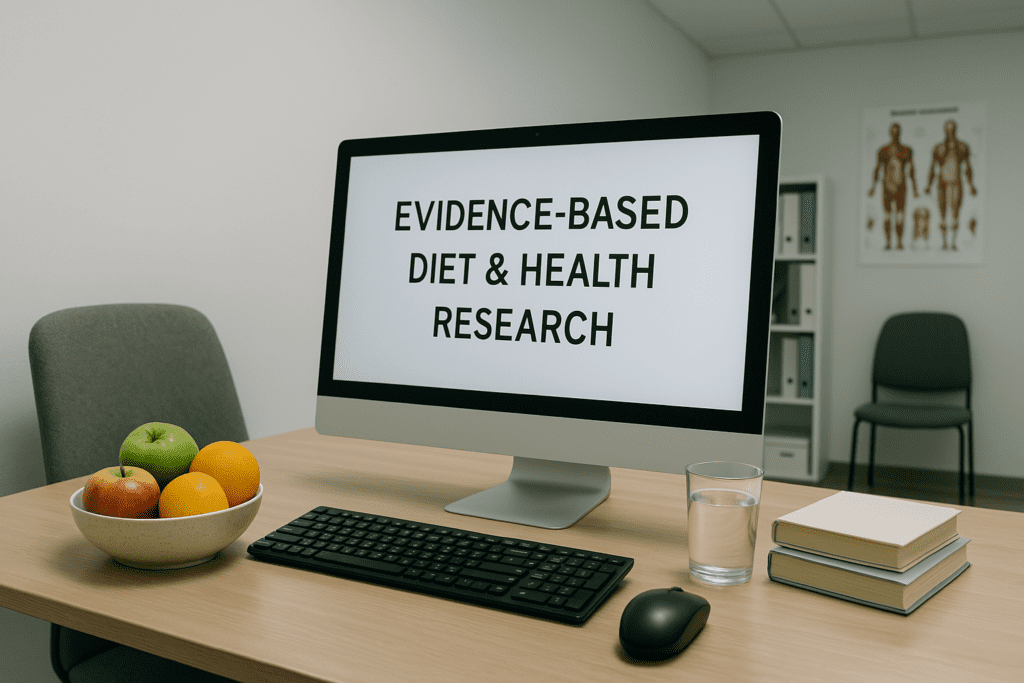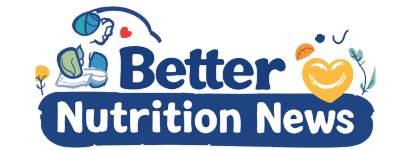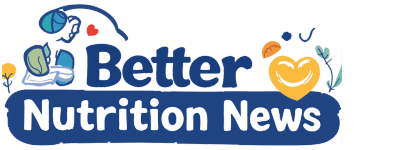In today’s information-rich landscape, nutrition websites and online diet directories are no longer just static pages with food charts and vitamin lists—they have evolved into dynamic, research-driven platforms that reflect the rapidly changing frontiers of food and health science. These digital tools are playing an increasingly pivotal role in translating complex scientific data into digestible, actionable knowledge for professionals, patients, and everyday health enthusiasts alike. From curated nutrition national databases to AI-driven personalized food and nutrition advice, the future of diet and health research is not merely shaped by laboratory discoveries—it is increasingly defined by how that information is disseminated, contextualized, and understood through digital interfaces.
You may also like: Best Foods for Cognitive Function: What Science Reveals About Brain Nourishment, Focus, and Mental Clarity
This transformation reflects a broader paradigm shift toward evidence-based nutrition, where decisions about diets, health interventions, and wellness recommendations are guided by rigorously validated scientific findings. But what exactly are nutrition sites and directories revealing about this evolution? How are they shaping the future of diet and health, and what role do they play in reinforcing the credibility, accessibility, and applicability of evidence-based practice? These are more than academic questions—they are practical inquiries into the very structure of modern nutritional awareness. Let us explore the underlying mechanics of this transformation and what it means for science, medicine, and everyday health.

The Rise of Digital Nutrition Resources as Scientific Hubs
Historically, public access to nutritional science was filtered through dense academic journals and governmental policy documents. Today, nutrition websites offer a bridge between those complex studies and the real-world application of their findings. They translate dense research into interactive tools, visual guides, and searchable databases that make evidence-based insights accessible without sacrificing credibility. The most advanced nutrition sites now function as science hubs in their own right, offering regularly updated content written or reviewed by credentialed experts such as registered dietitians, PhD-level researchers, and public health professionals.
This rise parallels the larger trend in medical publishing, where open-access journals and databases are becoming the norm. Nutrition-focused platforms have mirrored this movement, providing gateways to peer-reviewed literature, clinical trial summaries, and real-time dietary guidelines. For instance, the USDA’s FoodData Central and NIH’s Office of Dietary Supplements are part of a growing diet nutrition directory landscape that prioritizes transparency, reproducibility, and user engagement. These repositories do more than list facts—they provide interpretative context, risk-benefit assessments, and often integrate new findings faster than traditional media outlets.
The impact of these developments cannot be overstated. With the ability to track changes in nutritional consensus over time, users of nutrition websites gain insight into the scientific process itself. This nurtures critical thinking and helps dispel myths by demonstrating how knowledge evolves. Thus, these platforms serve not only as educational tools but as protectors of scientific integrity in an age plagued by misinformation.
Data Democratization and the Empowered Consumer
One of the most profound consequences of digital health resources is the democratization of scientific data. Where access was once limited to professionals with institutional credentials, today’s nutrition national platforms empower laypeople with direct access to up-to-date information. In turn, this has fueled a more health-literate population—one that demands transparency and efficacy in wellness claims and is increasingly skeptical of anecdotal evidence or influencer-driven advice.
These empowered consumers are not merely passive readers; they are active participants in shaping health trends and even research priorities. Analytics from nutrition websites reveal what topics attract attention, what diets generate the most questions, and which supplements cause concern. This behavioral data is invaluable to researchers and clinicians aiming to align public interest with clinical relevance. In effect, the structure and search patterns within diet nutrition directories act as a kind of crowd-sourced radar for emerging health trends and scientific gaps.
Furthermore, nutrition sites often host interactive features—such as nutrient calculators, symptom checkers, and personalized meal planners—that turn visitors into data contributors. As machine learning algorithms analyze this input, the platforms themselves grow smarter, tailoring advice more precisely and even flagging potential deficiencies or risks based on user-reported patterns. This loop of input and feedback represents a new model of participatory health research that prioritizes both evidence and experience.
How Directories Bridge Gaps Between Research, Policy, and Practice
Governmental and institutional food and nutrition guidelines are developed through lengthy, peer-reviewed processes, yet their impact can be diluted if not effectively communicated. Diet nutrition directories serve as a conduit, translating complex policy recommendations into accessible formats for healthcare providers, educators, and consumers. These platforms often contextualize new policies with expert commentary, FAQs, and interactive summaries that distill legislative updates into user-friendly insights.
More importantly, directories help ensure that the guidelines are implemented with fidelity. For instance, when the FDA updates labeling requirements or the WHO revises sugar intake recommendations, nutrition sites rapidly update their content, allowing consumers and professionals to adapt in real time. This tightens the feedback loop between science and behavior, reinforcing public trust in institutional recommendations.
Academic researchers also benefit from directories that aggregate and visualize trends in dietary intake, supplement use, and chronic disease correlations. These resources reduce redundancy, highlight knowledge gaps, and offer curated access to meta-analyses that might otherwise remain buried in subscription-based silos. Thus, food and nutrition directories act as both a reflection of current consensus and a catalyst for ongoing inquiry, advancing the translation of research into practice with greater efficiency and precision.
Evolving Standards for Evidence-Based Content in Nutrition Sites
As digital nutrition platforms gain influence, their credibility hinges on their adherence to evidence-based standards. Leading platforms now follow peer-review-like processes, where content is fact-checked by credentialed professionals before publication. Some even display publication and review dates, disclose conflicts of interest, and include citations that link directly to PubMed entries or government data. This level of transparency builds trust and distinguishes high-quality sites from content farms or commercially biased platforms.
The best nutrition sites are also dynamic, with ongoing content audits that ensure relevance and accuracy as new research emerges. They actively revise recommendations in light of new data, acknowledging uncertainty where appropriate. This is particularly crucial in areas where evidence is evolving—such as intermittent fasting, microbiome science, or the long-term effects of plant-based diets. By modeling scientific humility, these platforms foster a culture of intellectual honesty that reinforces their educational role.
In response to rising demand for accountability, certification programs now evaluate the quality of online health information. Organizations like the Health On the Net Foundation (HONcode) and the Journal of Medical Internet Research provide frameworks that assess editorial policies, sourcing practices, and user protection. Nutrition sites that meet these criteria are more likely to be trusted by health professionals and recommended as legitimate resources in clinical settings.
Nutrition National Databases: Precision Tools for Clinical and Public Health
Nutrition national databases are the backbone of large-scale dietary analysis and population health management. These repositories—such as the CDC’s National Health and Nutrition Examination Survey (NHANES) and the USDA’s National Nutrient Database—offer unparalleled insight into what people eat, how their bodies respond, and which populations are at risk for diet-related diseases. They serve as the foundation for national policy, targeted interventions, and longitudinal studies that guide public health funding and strategy.
What distinguishes these platforms is not just the volume of data, but its granularity and versatility. Researchers can filter by age, region, ethnicity, and lifestyle to uncover patterns that might be invisible in smaller studies. This enables targeted interventions—such as fortification campaigns or dietary subsidy programs—that address disparities at the root level. Nutrition sites that link directly to or embed tools from these databases provide users with authoritative, real-time access to this treasure trove of information.
Public-facing interfaces are evolving as well, making these complex datasets accessible to students, journalists, and community health workers. This promotes a shared vocabulary between researchers and the public and creates opportunities for collaborative problem-solving. As artificial intelligence becomes more integrated into these systems, expect to see even greater personalization, such as dietary risk profiles generated based on demographic or genomic data. The future of public health lies in harnessing this data not just for surveillance, but for precision action.
AI, Personalization, and the New Frontiers of Digital Nutrition
One of the most exciting developments in the field is the integration of artificial intelligence into nutrition platforms. AI-driven apps can now analyze dietary logs, scan barcodes, and offer real-time guidance based on individual goals, allergies, and chronic conditions. These technologies draw from diet nutrition directory databases to ensure accuracy, but layer predictive analytics and behavioral modeling to offer truly personalized insights.
This represents a major leap from one-size-fits-all guidelines. For example, a person managing hypertension and prediabetes may receive customized meal suggestions based not only on sodium and sugar content but also on their past food preferences, grocery access, and meal preparation skills. This level of personalization enhances compliance, satisfaction, and ultimately, outcomes.
Moreover, AI can detect patterns that may escape human notice—such as subtle nutrient deficiencies based on mood logs or sleep disruptions. Some platforms are beginning to integrate wearable data and gut microbiome analyses to fine-tune recommendations even further. While this field is still emerging, the convergence of nutrition websites, mobile apps, and health-tracking technology is setting the stage for a future where food becomes not just medicine, but precision medicine.
The Role of Community and Peer Engagement in Research Translation
An often-overlooked but critical function of digital nutrition platforms is the facilitation of community dialogue. Comment sections, forums, and expert Q&A features create spaces where individuals can share experiences, ask questions, and crowdsource solutions. This user-generated content adds depth to clinical perspectives and helps researchers understand how people interpret and apply nutritional advice in real life.
This feedback loop is particularly useful for refining health messaging. If a particular term or recommendation sparks confusion or controversy, moderators and editors can revise content for clarity or expand educational efforts in that area. In this way, nutrition websites become not only platforms for dissemination but for co-creation of knowledge—a dynamic ecosystem where science and society continually inform each other.
Several platforms also facilitate direct participation in research through citizen science projects, surveys, or beta testing of new tools. These initiatives help decentralize research, increase engagement, and diversify the dataset. As a result, evidence-based nutrition is no longer the exclusive domain of elite institutions—it is becoming a collaborative, grassroots endeavor grounded in lived experience and scientific rigor alike.

Frequently Asked Questions (FAQ)
1. How are nutrition websites evolving to support more personalized health goals?
Modern nutrition websites are increasingly leveraging AI and biometric data to offer tailored meal plans and dietary insights. This shift moves beyond generic advice and aligns with users’ unique genetics, health conditions, and activity levels. The best nutrition sites now integrate wearable data and even sync with glucose monitors to optimize meal timing. Additionally, several platforms offer microbiome-based recommendations, which is a new frontier in personalized nutrition. These enhancements reflect how nutrition websites are becoming dynamic tools in preventive healthcare rather than static information sources.
2. What role do diet nutrition directories play in verifying reliable health advice online?
A diet nutrition directory acts as a curated ecosystem of vetted professionals, research institutions, and evidence-based content providers. Unlike ad-driven content mills, these directories maintain higher standards by listing only certified dietitians, clinical nutritionists, or institutions that follow ethical guidelines. They help consumers differentiate between anecdotal advice and rigorously tested interventions. As more people turn to online platforms for health guidance, a diet nutrition directory ensures accountability by emphasizing expert credibility. Their rise reflects growing public demand for transparency and scientific integrity across all major nutrition sites.
3. How are national policies influencing food and nutrition access for underserved communities?
The intersection of food and nutrition with national policy has expanded through initiatives like produce prescription programs and subsidized farmers markets. These efforts, championed by organizations aligned with nutrition national strategies, help address chronic illnesses in food deserts. By embedding nutrition counseling within public health frameworks, national initiatives can reshape community-level access to fresh, nutrient-dense foods. Some emerging models even integrate culturally relevant meals to respect and reflect the populations they serve. This systemic approach complements the individualized support offered by nutrition websites while addressing root-level inequalities.
4. Are there overlooked features on nutrition sites that can help with chronic disease prevention?
Absolutely—many users overlook community support forums, goal-tracking dashboards, and clinical research libraries embedded within premium nutrition websites. These tools often include symptom trackers and nutrient intake visualizations that aid in identifying patterns that might otherwise go unnoticed. Advanced platforms also include AI chat assistants that interpret blood test data or suggest specific questions to ask healthcare providers. By engaging with these resources regularly, users can better manage or even prevent chronic issues such as metabolic syndrome or type 2 diabetes. The most progressive nutrition sites blend peer interaction with scientific guidance, which enhances both education and accountability.
5. How can educators use nutrition national resources to update school-based health curriculums?
Educators are increasingly turning to nutrition national portals, such as those supported by the USDA or NIH, to update outdated food education materials. These platforms provide age-specific lesson plans, interactive modules, and printable resources designed for classroom settings. They also highlight the latest dietary guidelines, which many nutrition websites are quick to reflect, ensuring alignment with current science. Incorporating these resources into curricula helps promote food literacy, encourage critical thinking, and foster lifelong healthy habits among students. Moreover, these tools bridge the gap between clinical nutrition and everyday understanding, which is crucial for early intervention.
6. In what ways does a diet nutrition directory help practitioners collaborate across disciplines?
A modern diet nutrition directory often includes profiles for dietitians, behavioral therapists, fitness coaches, and even gastroenterologists, enabling interdisciplinary collaboration. These directories are more than search tools—they’re digital networking hubs for healthcare professionals who share patient management duties. For instance, a registered dietitian can easily refer a patient to a mental health specialist specializing in eating disorders. Integrated communication tools within the directory streamline the referral process and ensure continuity of care. Such innovation goes beyond the scope of most nutrition websites and directly supports a more holistic model of patient wellness.
7. What long-term societal trends are emerging from the popularity of food and nutrition apps?
The popularity of food and nutrition apps is accelerating broader societal shifts toward self-quantification and preventative health. People are not just tracking calories—they’re monitoring inflammation markers, glycemic load, and even the planetary impact of their meals. This micro-awareness fosters macro changes, such as reduced meat consumption and increased interest in sustainable agriculture. Many top-rated nutrition sites now integrate these apps or offer cross-platform syncing, reinforcing a culture of lifelong dietary mindfulness. Over time, these shifts could significantly alter national healthcare expenditures and even influence urban planning through demand for healthier food options.
8. How do nutrition websites address the mental health impact of dietary choices?
Leading nutrition websites are beginning to incorporate mood tracking features and content that connects diet to mental health outcomes, such as anxiety, depression, and cognitive decline. These platforms increasingly promote foods that support neuroplasticity, gut-brain balance, and neurotransmitter production. A few sites now include expert blogs or interviews with nutritional psychiatrists to bridge the gap between food and mood. Furthermore, integrated dietary programs focus on nutrient timing, which can regulate circadian rhythms and improve emotional regulation. By recognizing this mind-body connection, nutrition websites are evolving from calorie counters into comprehensive wellness tools.
9. How are global organizations aligning with nutrition national strategies to combat malnutrition?
Global health organizations like WHO and FAO are aligning closely with nutrition national programs by supporting region-specific fortification, breastfeeding education, and maternal nutrition campaigns. These efforts are mirrored on international nutrition websites that provide multilingual content and culturally adaptive recipes. Mobile-friendly versions of these sites are essential in rural or low-connectivity areas, improving outreach and compliance. The synergy between global institutions and national policies strengthens data sharing and resource optimization, improving outcomes across borders. Ultimately, this collaboration is essential for scaling solutions to both undernutrition and overnutrition challenges worldwide.
10. What innovations are emerging from partnerships between universities and nutrition sites?
Collaborations between academic institutions and nutrition sites are giving rise to real-time clinical research platforms that gather anonymized user data to study trends in dietary behavior. Universities use this data to validate new nutritional theories or investigate how digital tools affect behavior change over time. Some nutrition websites even offer live participation in dietary studies, giving users early access to novel interventions and personalized reports. These partnerships also help train future dietitians through digital internships or crowdsourced case studies. This blending of academic rigor and user engagement exemplifies the future of scalable, evidence-backed nutrition interventions.

Conclusion: The Future of Food and Nutrition Research Lies in the Digital Commons
As the boundaries between clinical science, public health policy, and personal wellness continue to blur, the role of digital nutrition sites and diet directories becomes ever more critical. These platforms are no longer passive information sources—they are engines of innovation, translation, and empowerment. By leveraging real-time data, expert oversight, and AI-powered personalization, nutrition websites are helping shape a future in which evidence-based practice is not only more accurate, but more accessible, inclusive, and impactful.
For anyone committed to improving individual or population health, understanding how to navigate, evaluate, and contribute to these platforms is now an essential skill. The integration of user data, expert insight, and emerging science into seamless digital experiences represents a new model of health education—one rooted in transparency, adaptability, and shared responsibility. Food and nutrition decisions are no longer based solely on tradition, instinct, or isolated studies—they are increasingly grounded in an ever-evolving, evidence-based digital commons.
This convergence of science and technology holds great promise, but it also demands vigilance. As nutrition national databases grow more sophisticated and personalized tools become widespread, it will be vital to uphold rigorous standards of accuracy, privacy, and ethical data use. The future of nutrition lies not just in better understanding what we eat, but in reimagining how we learn, share, and act on that knowledge—together.
digital health innovation, AI-driven meal planning, dietary tracking tools, evidence-based diet strategies, online food analysis platforms, nutrient databases for public health, personalized nutrition algorithms, consumer health literacy, wellness content accuracy, health app credibility, food labeling transparency, nutrition informatics, digital public health tools, science-backed eating plans, health data privacy in nutrition apps, clinical diet guidelines online, interactive health education, participatory nutrition research, wellness tech trends, user-centered health platforms
Further Reading:
Creating the Future of Evidence-Based Nutrition Recommendations: Case Studies from Lipid Research
Science and Evidence-Based Nutrition Information You Can Trust
Disclaimer: The content published on Better Nutrition News (https://betternutritionnews.com) is for informational and educational purposes only. It is not intended as a substitute for professional medical advice, diagnosis, or treatment. Always seek the guidance of a qualified healthcare professional before making any changes to your diet, nutrition, or wellness practices. The opinions expressed by authors and contributors are their own and do not necessarily reflect those of Better Nutrition News.
Better Nutrition News and its affiliates make no representations or warranties regarding the accuracy, completeness, or reliability of the information provided. We disclaim all liability for any loss, injury, or damage resulting from the use or reliance on the content published on this site. External links are provided for reference purposes only and do not imply endorsement.



